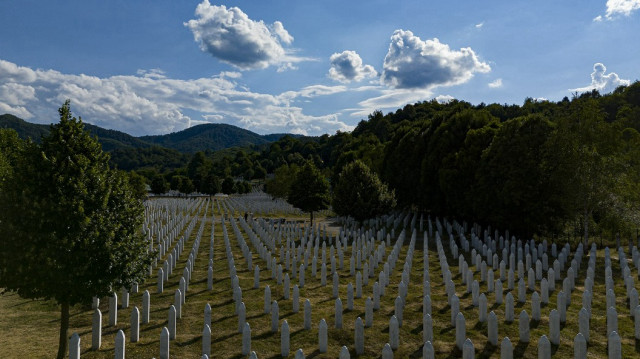
Nearly 80% of missing from 1990s war identified, but thousands still wait to be found
In a country where tens of thousands disappeared during the 1992-1995 Bosnian war, Bosnia and Herzegovina's Institute for Missing Persons has emerged as a beacon of hope, reuniting families with their loved ones and setting a model for post-conflict recovery worldwide.
The state-level institute, established to trace and identify those who vanished during the war, was made a permanent fixture in Bosnia, unlike other countries, which tend to rely on temporary commissions or international bodies.
Today, nearly 80% of the 32,000 people reported missing during the war have been found and identified — a rate unmatched globally — while more than 7,600 remain unaccounted for.
Around 1,300 unidentified remains are still held in mortuaries across the country.
- Pioneering approach born of necessity
Amor Masovic, the institute's former director and co-founder, said Bosnia began documenting missing persons as early as April 1992, during the first months of the conflict, recognizing the importance of systematic record-keeping.
“My advice to countries in conflict is clear: start documenting disappearances immediately, including locations and circumstances,” Masovic told Anadolu.
He emphasized that the missing are often victims of serious crimes, including war crimes and genocide, underscoring the urgency of their recovery for both justice and reconciliation.
After the 1995 Dayton Peace Agreement, Bosnia had three separate agencies working on missing persons cases which would frequently duplicate efforts or obstruct one another.
Determined to unify these efforts, Masovic enlisted the support of the International Commission on Missing Persons to create a single, coordinated body.
In 2004, Bosnia passed a groundbreaking law on missing persons — the first of its kind globally — which established the institute as a unified national body and granted legal rights to the families of the missing.
- Model for world
The institute's success has been recognized by the UN as a “colossal achievement.” Neighboring countries — including Croatia, Serbia and Kosovo — have adopted similar approaches, and the model is now being studied for possible use in Ukraine.
Emza Fazlic, a spokesperson for the institute, highlighted its exceptional track record, noting that while conflict-affected regions typically identify up to 30% of missing persons, Bosnia has identified nearly 80%.
“This institute has become a pillar of the search for the missing in our country,” Fazlic told Anadolu.
Despite these successes however, challenges still remain.
Masovic explained that between 2,200 and 2,400 of the missing are believed to be among the unidentified remains stored in mortuaries but cannot be matched due to the absence of DNA from close relatives.
Others were misidentified in the immediate post-war years, complicating later efforts to establish identities.
To address these challenges, Masovic has proposed using DNA samples from deceased parents to match unidentified remains, allowing families to finally lay their loved ones to rest.
“The institute is a unique organization dedicated to finding missing persons from all backgrounds and has proven to be the most effective way to search for the missing,” Masovic said.







